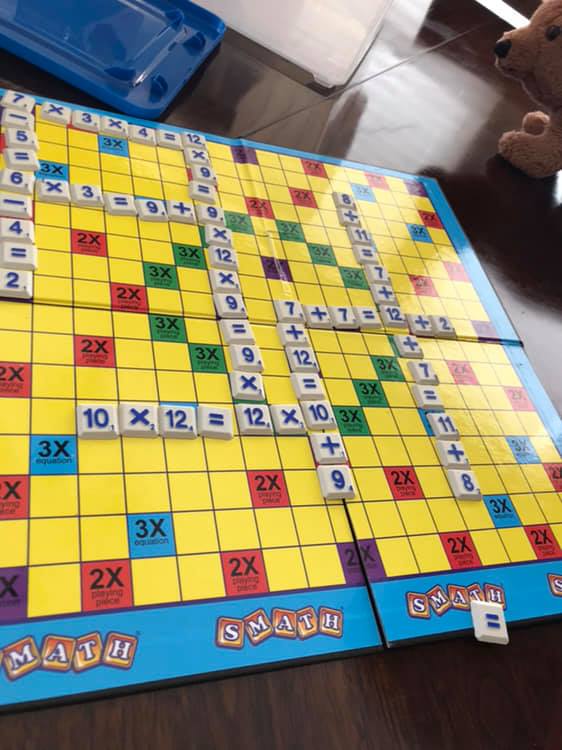
Smath is a math version of Scrabble. I actually didn’t like it the first time I played it. The kids found it frustrating and unenjoyable. It sat in the closet unused for awhile, a regretted purchase, and then I brought it back out one day and discovered it actually was fun and useful when played in a slightly different way.
If you play it according to the official rules, you play by drawing a few tiles to place on your rack (numbers, operation signs, parentheses, and equal signs) and then making equations on the game board that connect to each other. This is where I found it frustrating for my struggling elementary students- they hadn’t yet learned order of operations and how to use parentheses, and often didn’t have enough fluency with multiplication and division, so were not able to make enough moves, and were passing almost every turn. You can of course as the game suggests take out the parentheses tiles and the multiplication/division and play only with addition/subtraction, but I wanted the kids to practice their multiplication and division.
The adaptation I made was to turn all the tiles over and let the kids choose from all of them as many as they wanted to use on their turn. With this everyone was able to be successful and the math talk became incredible as they figured out the moves that would give them the most points (just like in Scrabble, playing on certain squares gives you double number points or double/triple equation points.) They quickly discovered how to use commutative property to make equivalent equations. Then when they ran out of number tiles, they discovered they could use the factors of the number. No 12 tiles left? Use 4 *3 or 6* 2 to make an equivalent. Our goal became to use as many of the tiles as possible.
We played until we ran out of time and the kids are already asking when we can play again! By playing in this modified way, I can see this game becoming one of my favorites for developing number sense in upper elementary students.
